#cuba in the 1920s
Text



Cuban Social vol VI nr. 5 (mayo 1921)
#cuba#cuban#cubano#cuba in the 1920s#real cuba#cubans#cuban history#colonial cuba#cubanos#cubanas#cubana
5 notes
·
View notes
Photo
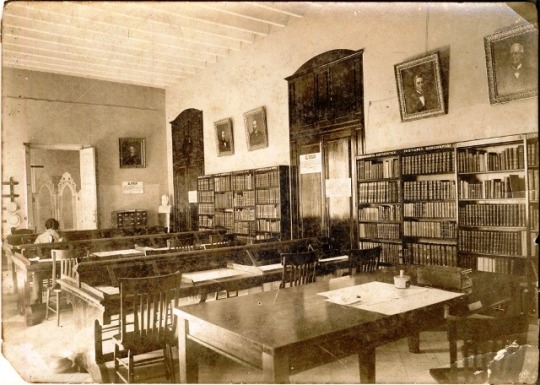
Sala de lectura, Biblioteca Nacional José Martí (Reading room, José Martí National Library), Havana, Cuba, late 1920s.
Photographer: Villas.
#Vintage#Retro#Library#libraries#Biblioteca#Bibliotecas#Sala de lectura#Reading Room#Biblioteca Nacional#National Library#Biblioteca Nacional José Martí#José Martí National Library#Havana#Cuba#1920s#20s#BNJM#photography#Book#Books#Bookish
159 notes
·
View notes
Text
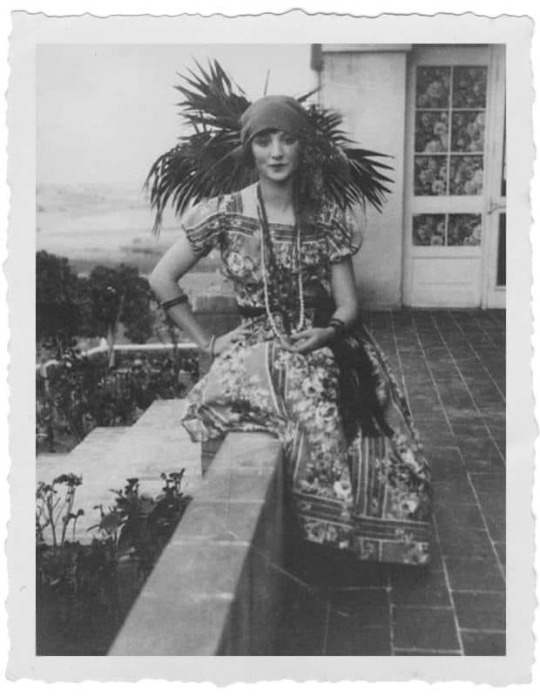
Anaïs Nin, Havana c. 1920s
9 notes
·
View notes
Text

USS Arizona (BB-39) at Guantanamo Bay, Cuba, circa January 1920.
NHHC: NH 89736
#USS Arizona (BB-39)#USS Arizona#Pennsylvania Class#dreadnought#battleship#warship#ship#Guantanamo Bay#Cuba#January#1920#interwar period#united states navy#us navy#navy#usn#u.s. navy#my post
50 notes
·
View notes
Text

Santiago de Cuba. Punta Blanca.
9 notes
·
View notes
Text

0 notes
Text

Cuban illustrator Conrado Walter Massaguer (Conrado W. Massaguer, Conrado Massaguer, C. W. Massaguer, Massaguer), Fashion Illustration of a High Society Couple, Cuba, 1920s.
#Conrado Walter Massaguer#1920s#illustration#20s illustration#1920s illustrations#massaguer#conrado w. massaguer#opera#opera coat#smoking#black tuxedo#fur#fur coat#art deco#art deco illustrations#art deco fashion#cigarettes#cigarette#smoker#sexy smoking#jazz age#the roaring twenties#fashion illustration#high society#couple#intimate#lovers#romantic#affection#C.W. Massaguer
129 notes
·
View notes
Text
Today marks 100 years since Hitler's first attempt to take over Germany by force, and 85 years since Kristallnacht, the Nazi-orchestrated pogrom that really forced Jews to realize how great the danger posed to them in Europe was.
A few years ago, I made a post with some of the updated data from research conducted in recent years, but this year, after the massacre of Oct 7, most of what I wrote doesn't feel relevant in the same way.
I'm thinking of this...
Up until that pogrom, it was a negligible Jewish minority that realized they HAD to get out, if they wanted to survive. Afterwards, as ALL Jews tried to flee, the world basically closed its doors to the Jewish refugees. Of those who got out in time, some found refuge in Israel, those who were lucky enough not to be blocked by the British, who were ruling this land at the time.
I've researched Jewish families' stories, and how they were torn apart. One youngster gets it and leaves in time. His elderly parents don't know how to start over in a different place, when being German was so embedded in their identity. They end up taking their own lives. These two single sisters make it to Israel. Their nephew writes them in Hebrew that he had dreamed at night of the whole family joining them in the Jewish homeland. He and his parents are murdered in shooting pits in Riga. A Zionist boyfriend makes it out. His girlfriend, trapped in the Lodz Ghetto, thinks back to his stories about Yossef Trumpeldor, a Jewish man who died in northern Israel in 1920, defending his community from Arab attackers, and whose last words were, "It's good to die for our country." She cries. "That's what I wanted, to die with dignity while fighting, not like this, like a human rag." She survives and joins him in Israel. To some people, she's an evil colonizer, whose rape and murder they are capable of justifying. They do so while quoting Elie Wiesel's words, about the importance of speaking up, because silence only never helps the oppressed. They're co-opting Wiesel's words, a Holocaust survivor himself, who was a Zionist, and extremely critical of Hamas.
Story after story, it's all the same. In families or communities that were split, those who got to Israel survived. For those who remained or tried a different escape route, most didn't make it (like Anne Frank's family, who fled Germany, tried to make it to the US or Cuba, were turned away repeatedly, and ended up going into hiding in the Netherlands... with only Anne's father surviving).
I am thinking about how, if there had been a State of Israel, a safe haven for Jews, that would automatically take them in when they needed to get away from the Nazis, we estimate that at least a million and a half Jews would have been saved.
I am thinking about how, there would have been a Jewish state to bomb the gas chambers in Auschwitz and save at least half a million Jews from them, instead of uselessly begging the allied leaders to.
I am thinking about how, if the allied leaders would have taken into account the political profit from cultivating an alliance with the Jewish state, that could have provided the political motivation to their begging Jewish citizens a different answer, and they would have actually done something to save at least some of the Jews.
I am thinking about how, for 80 years or so, the world has been chanting, "Never again," but when Hamas terrorists massacred the biggest number of Jews in a single day since the Holocaust, too many couldn't even condemn it. I'm thinking about how, when some justify the massacre of Israeli Jews, including Holocaust survivors and their families, most people don't tell them off. When Israel fights back to protect the rest of its population, as it swore it would (yes, "Never again" also means the right to self defense), the world condemns it, vilifying the Jews again, by depicting Israel's response as nothing but blood lust and a desire for revenge. I'm thinking... this is why we have to have Israel. So we never again are dependent on the silent world to defend our right to live. So that implementing "Never again" is never a question of whether non-Jews did more than recite the words emptily.
The massacre that took place on Oct 7 was horrific. But we saw the repetitive nature, the scale, the wide geographical spread, and the industrial nature of countless massacres that happened when there was no Israel to respond, and when no one was defending the Jews.
From 1851 (when Rabbi Avraham Shlomo Zalman Zoref was murdered on his way to synagogue in Jerusalem) to this day, less Jews died in the Arab-Israeli conflict than during just two days in the Nazi shooting pit of Baby Yar, on Sep 29 and 30, 1941. In Israel, the memorial days for the Jews murdered in the Holocaust, and for the people we lost in the Israeli-Arab conflict, are observed one week apart. The way that many here put here, the latter is to remember the price of having a state, and the former is to remember the price of not having one.
You don't have to agree with this POV. But when you look at the poisonous atmosphere cultivated online, including on Tumblr, where the Hamas massacre has been justified, or denied, or simply didn't merit a reaction, when you see how the global rise in antisemitism goes without much discussion, when you see people justifying violence towards Jews, based on a false narrative that erases entire chunks of Jewish history, at least understand where people who embrace this POV come from.
(for all of my updates and ask replies regarding Israel, click here)
#israel#israeli#israel news#israel under attack#israel under fire#terrorism#anti terrorism#antisemitism#hamas#antisemitic#antisemites#jews#jew#judaism#jumblr#frumblr#jewish#kristallnacht#holocaust#shoah
139 notes
·
View notes
Photo







I said I had a new (’new’ as in newly displayed here, I’ve actually been playing him for 2 years now) ttrpg character I’d be posting about, and here he is: my Vampire: the Masquerade Cuban ghoul, Manuel Ramírez-Valverde! (Pics are a mix of old art and new)
Our campaign is set during 1928 so, if you know anything about the history of Cuba around 1890-1920, then you’d understand why he’s a rather jaded individual who generally is out for himself and has taken on ghouldom under a Ventrue as a means to get as far up on the food chain (metaphorical and literal). Lately though, he’s been getting a little soft thanks to new friends and various other character arc things.
Also if you’ve never played any VtM related things, that last paragraph probably sounds like a bunch of gobbledygook to you, so if anything, I just hope you enjoy this sarcastic toady of a man (more pics to follow another day~)
#Manuel Ramirez-valverde#vampire: the masquerade#vtm#vtm5e#ghoul#ventrue#he's my little blorbo with horrid tastes#lucky art#Screamin' 20s
440 notes
·
View notes
Text
Tamara Falco's Wedding Tiara

Tamara Falcó Preysler, the 6th Marchioness of Griñón, is marrying Íñigo Onieva Molas tomorrow at Palacio de el Rincón in Madrid and she helpfully already told us which of her family's tiaras she is going to wear! Thanks to @duchess-of-lara for telling me about it because I didn't even realize the wedding was back on after the couple broke up last year. Tamara is a Spanish socialite and TV presenter notable for being the daughter of Isabel Preysler and the sister of Enrique Iglesias.
Tamara has chosen to wear the Montellano Diamond Tiara that was made in the 1920s for her grandmother, Hilda Fernández de Córdoba y Mariátegui, 12th Marchioness of Mirabel, 3rd Countess of Santa Isabel, 10th Countess of Berantevilla, who was married to Manuel Falcó y Escandón, 9th Duke of Montellano, 11th Marquess of Castel-Moncayo, 9th Marquess of Pons, so there's a lot of titles in the family and I don't even think that's all of them. In my opinion, Spain has the best system when it comes to noble titles because they have equal primogeniture meaning women can inherit in their own right and are not skipped over for their younger brothers. Also, if you have more than one you can cede the lesser titles to your younger children so Tamara is the third child of her father but he left her the Griñón title because there were other titles that his older two children were inheriting.
María del Rocío Falcó y Fernández de Córdoba, Countess of Berantevilla, wore the tiara for her debut ball in 1950. Her mother, Hilda, who was the original owner of the diamond tiara, is wearing the Turquoise Bowknot Tiara that was made by Chaumet in 1891 for her own mother-in-law, Carlota Maximiliana de Escandón y Barrón. The top of the tiara has been altered since then and I'm not sure which member of the family owns it now but they loan it out for exhibitions sometimes.
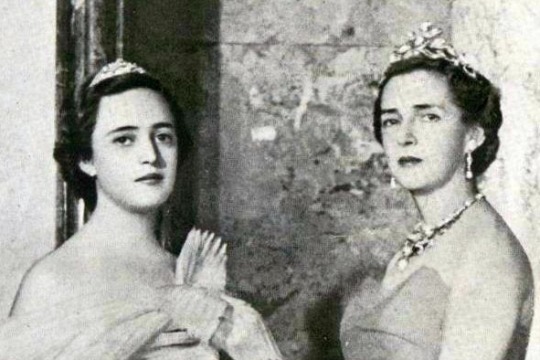
Jannine Girod del Avellanal wore the tiara at her wedding to Carlos Falcó y Fernández de Córdova, 12th Marquess of Castel-Moncayo, 5th Marquess of Griñón, in 1966.
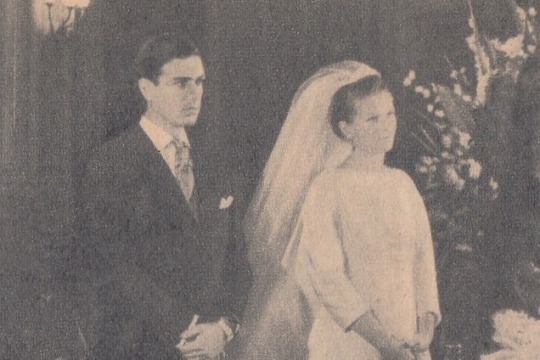
Carla Pía Falcó y Medina, 10th Duchess of Montellano, wore the tiara at her wedding to Jaime Matossian y Osorio in 1981. Carla also appears to own the Wild Rose Tiara made by Chaumet in 1922 but I don't know if it has a longer history in the Falcó family.

Amparo Corsini Montero wore the tiara at her wedding to Manuel Falcó y Girod, 13th Marquess of Castel-Moncayo, in 1999. Manuel is Tamara's brother and the current owner of the diamond tiara.
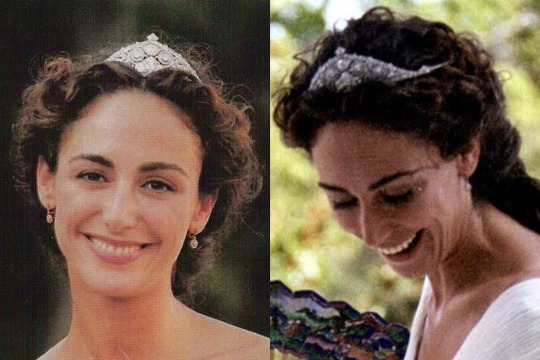
There's also the Montellano Pearl & Diamond that was worn by Tamara's sister, Alejandra Falcó y Girod, 13th Marchioness of Mirabel, at her wedding to Jaime de Carvajal y Hoyos, 17th Marquess of Almodóvar del Río, in 1998 and was worn last year by Isabelle Junot at her wedding to Álvaro Falcó Chávarri, 4th Marquess of Cubas. I think the diamond tiara is the right choice. It has a long history in the family and looks like it would be the easiest to wear.
#Tiara Talk#Tamara Falco#Marchioness of Grinon#Spain#Spanish Aristocracy#Spanish Nobility#diamond#bridal tiara#Duchess of Montellano#Countess of Berantevilla#Marchioness of Castel-Moncayo#Marchioness of Mirabel#I'm always tempted to not translate the titles from Spanish to English like I do with other languages#They just sound so much better in Spanish#Marquesa de Grinon#Duquesa de Montellano#Marquesa de Mirabel#Marquesa de Castel-Moncayo#Condesa de Berantevilla#duchess of lara
74 notes
·
View notes
Text




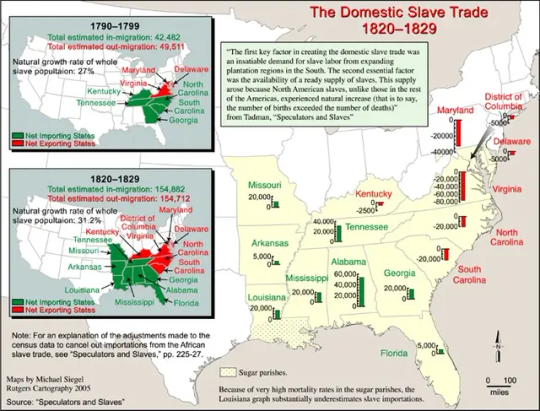
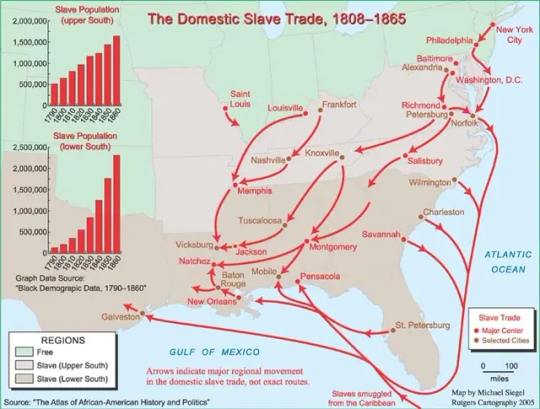

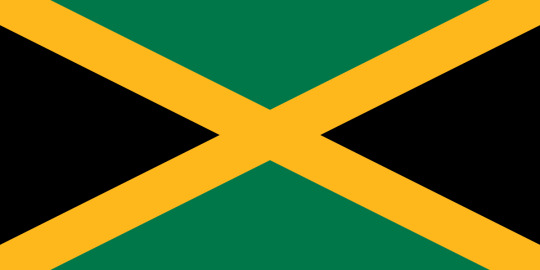



The Igbo in the Atlantic slave trade
Bussa, Barbadian slave revolt leader of Igbo descent
Edward Blyden, Americo-Liberian educator, writer and politician of Igbo descent
Paul Robeson, American actor and writer whose father was of Igbo descent
Aimé Césaire, Martiniquais poet and politician who claimed Igbo descent) argues that many of the slaves taken from the Bight of Biafra across the Middle Passage would have been Igbo. These slaves were usually sold to Europeans by the Aro Confederacy, who kidnapped or bought slaves from Igbo villages in the hinterland. Igbo slaves may have not been victims of slave-raiding wars or expeditions but perhaps debtors or Igbo people who committed within their communities alleged crimes. With the goal for freedom, enslaved Igbo people were known to European planters as being rebellious and having a high rate of suicide to escape slavery. There is evidence that traders sought Igbo women. Igbo women were paired with Coromantee (Akan) men to subdue the men because of the belief that the women were bound to their first-born sons’ birthplace.
It is alleged that European slave traders were fairly well informed about various African ethnicities, leading to slavers targeting certain ethnic groups which plantation owners preferred. Particular desired ethnic groups consequently became fairly concentrated in certain parts of the Americas. The Igbo were dispersed to colonies such as Jamaica, Cuba, Saint-Domingue, Barbados, Colonial America, Belize and Trinidad and Tobago, among others.

Rihanna is also Igbo
Colonial Nigeria
The establishment of British colonial rule in present-day Nigeria and increased encounters between the Igbo and other ethnicities near the Niger River led to a deepening sense of a distinct Igbo ethnic identity. The Igbo proved decisive and enthusiastic in their embrace of Christianity and Western-style education. Because of the incompatibility of the Igbo decentralized style of government and the centralized system including the appointment of warrant chiefs required for British system of indirect rule, the period colonial rule was marked with numerous conflicts and tension. During the colonial era, the diversity within each of Nigeria's major ethnic groups slowly decreased, and distinctions between the Igbo and other large ethnic groups, such as the Hausa and the Yoruba, became sharper.
The establishment of British colonial rule transformed Igbo society, as portrayed in Chinua Achebe's novel Things Fall Apart. Colonial rule brought about changes in culture, such as the introduction of warrant chiefs as Eze (indigenous rulers) where there were no such monarchies. Christian missionaries introduced aspects of European ideology into Igbo society and culture, sometimes shunning parts of the culture. The rumours that the Igbo women were being assessed for taxation sparked off the 1929 Igbo Women's War in Aba (also known as the 1929 Aba Riots), a massive revolt of women never encountered before in Igbo history.
Aspects of Igbo culture such as construction of houses, education and religion changed following colonialism. The tradition of building houses out of mud walls and thatched roofs ended as the people shifted to materials such as concrete blocks for houses and metal roofs. Roads for vehicles were built. Buildings such as hospitals and schools were erected in many parts of Igboland. Along with these changes, electricity and running water were installed in the early 20th century. With electricity, new technology such as radios and televisions were adopted, and have become commonplace in most Igbo households.
A series of black and white, silent films about the Igbo people made by George Basden in the 1920s and 1930s are held in the British Empire and Commonwealth Collection at Bristol Archives

#african#afrakan#kemetic dreams#africans#brownskin#brown skin#afrakans#african culture#afrakan spirituality#igbo#nigerian#british empire#jamaica#jamaican#barbados#igbo culture#igbo history#rihanna
25 notes
·
View notes
Photo
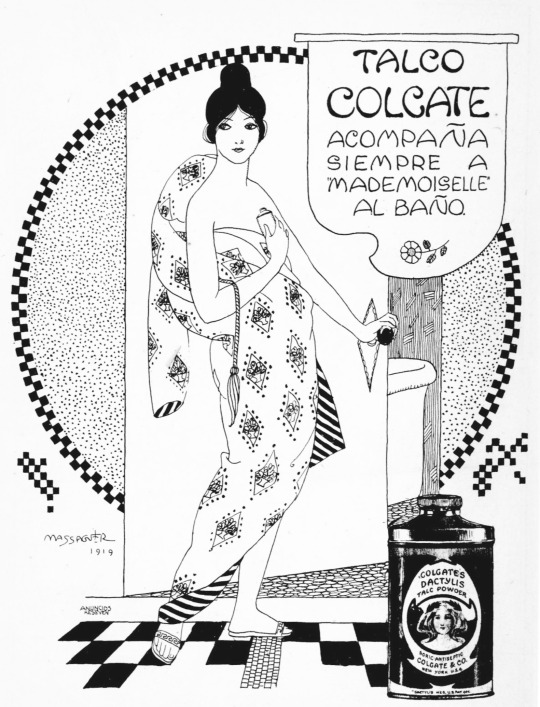
Cuban Social vol V nr. 5 (mayo 1920)
12 notes
·
View notes
Text


some DC batman rogues gallery redesigns for a TTRPG set in a a sort of retro futuristic 1920's /1940's
On the run from some incident in cuba, Young up and comers Joker and Harley Quinn find themselves in Gothom after a whirlwind series of bankheists , shootouts and murders up the southern coast .
not beholden to any of the various Gangs and families that rule Gothom they have in fact have made waves by starting a gang war when they killed a number of high profile members of the five families in penguins Iceburg lounge (nominally a neutral ground )
this sudden wanton violence from all corners forces an older Bruce Wayne and Selina Kyle out of retirement to bring some sembelence of order to the chaos
21 notes
·
View notes
Text
Sherwood Eddy was a prominent American missionary as well as that now rare thing, a Christian socialist. In the 1920s and ’30s, he made more than a dozen trips to the Soviet Union. He was not blind to the problems of the U.S.S.R., but he also found much to like. In place of squabbling, corrupt democratic politicians, he wrote in one of his books on the country, “Stalin rules … by his sagacity, his honesty, his rugged courage, his indomitable will and titanic energy.” Instead of the greed he found so pervasive in America, Russians seemed to him to be working for the joy of working.
Above all, though, he thought he had found in Russia something that his own individualistic society lacked: a “unified philosophy of life.” In Russia, he wrote, “all life is focused in a central purpose. It is directed to a single high end and energized by such powerful and glowing motivation that life seems to have supreme significance.”
Eddy was wrong about much of what he saw. Joseph Stalin was a liar and a mass murderer; Russians worked because they were hungry and afraid. The “unified philosophy of life” was a chimera, and the reality was a totalitarian state that used terror and propaganda to maintain that unity. But Eddy, like others in his era, was predisposed to admire the Soviet Union precisely because he was so critical of the economics and politics of his own country, Depression-era America. In this, he was not alone.
In his landmark 1981 book, Political Pilgrims: Travels of Western Intellectuals to the Soviet Union, China, and Cuba, Paul Hollander wrote of the hospitality showered on sympathetic Western visitors to the Communist world: the banquets in Moscow thrown for George Bernard Shaw, the feasts laid out for Mary McCarthy and Susan Sontag in North Vietnam. But his conclusion was that these performances were not the key to explaining why some Western intellectuals became enamored of communism. Far more important was their estrangement and alienation from their own cultures: “Intellectuals critical of their own society proved highly susceptible to the claims put forward by the leaders and spokesmen of the societies they inspected in the course of these travels.”
Hollander was writing about left-wing intellectuals in the 20th century, and many such people are still around, paying court to left-wing dictators in Venezuela or Bolivia who dislike America. There are also, in our society as in most others, quite a few people who are paid to help America’s enemies, or to spread their propaganda. There always have been.
But in the 21st century, we must also contend with a new phenomenon: right-wing intellectuals, now deeply critical of their own societies, who have begun paying court to right-wing dictators who dislike America. And their motives are curiously familiar. All around them, they see degeneracy, racial mixing, demographic change, “political correctness,” same-sex marriage, religious decline. The America that they actually inhabit no longer matches the white, Anglo-Saxon, Protestant America that they remember, or think they remember. And so they have begun to look abroad, seeking to find the spiritually unified, ethnically pure nations that, they imagine, are morally stronger than their own. Nations, for example, such as Russia.
The pioneer of this search was Patrick Buchanan, the godfather of the modern so-called alt-right, whose feelings about foreign authoritarians shifted right about the time he started writing books with titles such as The Death of the West and Suicide of a Superpower. His columns pour scorn on modern America, a place he once described, with disgust, as a “multicultural, multiethnic, multiracial, multilingual ‘universal nation’ whose avatar is Barack Obama.” Buchanan’s America is in demographic decline, has been swamped by beige and brown people, and has lost its virtue. The West, he has written, has succumbed to “a sexual revolution of easy divorce, rampant promiscuity, pornography, homosexuality, feminism, abortion, same-sex marriage, euthanasia, assisted suicide—the displacement of Christian values by Hollywood values.”
This litany of horrors isn’t much different from what can be heard most nights on Fox News. Listen to Tucker Carlson. “The American dream is dying,” Carlson declared one recent evening, in a monologue that also referred to “the dark age that we are living through.” Carlson has also spent a lot of time on air reminiscing about how the United States “was a better country than it is now in a lot of ways,” back when it was “more cohesive.” And no wonder: Immigrants have “plundered” America, thanks to “decadent and narcissistic” politicians who refuse to “defend the nation.” You can read worse on the white-supremacist websites of the alt-right—do pick up a copy of Ann Coulter’s Adios America: The Left’s Plan to Turn Our Country Into a Third World Hellhole—or hear more extreme sentiments in some evangelical churches. Franklin Graham has declared, for example, that America “is in deep trouble and on the verge of total moral and spiritual collapse.”
What a terrible place all of these people are describing. Who would want to live in a country like that? Or, to put it differently: Who wouldn’t sympathize with the enemies of a country like that? As it turns out, many do. Certainly Buchanan does. Russian cyberwarriors work with daily determination to undermine American utilities and electricity grids. Russian information warriors are trying to deform American political debate. Russian contract killers are murdering people on the streets of Western countries. Russian nuclear weapons are pointed at us and our allies.
Nevertheless, Buchanan has come to admire the Russian president because he is “standing up for traditional values against Western cultural elites.” Once again, he feels the shimmering lure of that elusive sense of “unity” and purpose that complicated, diverse, quarrelsome America always lacks. Impressed with the Russian president’s use of Orthodox pageantry at public events, Buchanan even believes that “Putin is trying to re-establish the Orthodox Church as the moral compass of the nation it had been for 1,000 years before Russia fell captive to the atheistic and pagan ideology of Marxism.”
He is not alone. The belief that Russia is on our side in the war against secularism and sexual decadence is shared by a host of American Christian leaders, as well as their colleagues on the European far right. Among them, for example, are the movers and shakers behind the World Congress of Families, an American evangelical and anti-gay-rights organization that Buchanan has explicitly praised. One of the WCF’s former leaders, Larry Jacobs, once declared that “the Russians might be the Christian saviors of the world.” The WCF even has a Russian branch, which is run by Alexey Komov, a man in turn linked to Konstantin Malofeev, a Russian oligarch who has hosted far-right meetings all across Europe. At the WCF’s most recent meeting, in Verona, senior Russian priests mingled with leaders of the Italian far right, the Austrian far right, and their comrades from the American heartland.
Carlson’s support for Russia, by contrast, takes the form of snarling sarcasm rather than open admiration. Much as Jane Fonda once posed, just for the provocative kick of it, with a North Vietnamese anti-aircraft gun, Carlson has started teasing his viewers and his critics with his amusingly contrarian views on Russia. “Why shouldn’t I root for Russia?” he asked recently. A couple of days later, he tried it again: “I think we should probably take the side of Russia, if we have to choose between Russia and Ukraine.”
Ironically, during the Reagan administration, Carlson’s father ran Voice of America, the radio station that broadcast American values into the U.S.S.R. Or maybe this is not an irony, but rather an explanation. In his book, Hollander described the prestige that Albanian communism once enjoyed in Sweden and Norway. Few Scandinavians had ever been there, but that didn’t matter: “Albania is picked up simply because it seems to be a club with a particularly sharp nail at the end of it with which to beat one’s own society, one’s own traditions, one’s own parents.” Now Carlson is using Russia as a club with which to beat his own society and his own traditions.
Fortunately for all such critics, they don’t have to spend much time in the country they are “rooting” for, because there is no greater fantasy than the idea that Russia is a country of Christian values. In reality, Russia has one of the highest abortion rates in the world, nearly double that of the United States. It has an extremely low record of church attendance, though the numbers are difficult to measure, not least because any form of Christianity outside of the state-controlled Orthodox Church is liable to be considered a cult. A 2012 survey showed that religion plays an important role in the lives of only 15 percent of Russians. Only 5 percent have read the Bible.
If American Christians would find little to cheer for in Vladimir Putin’s Russia, American white nationalists would be disappointed too. Carlson has wondered aloud about America’s racial mix, asking, “How precisely is diversity our strength?” He would have a real dilemma in Russia. Nearly 20 percent of Russian citizens do not even identify as Russian, telling pollsters that they belong to different nationalities, ranging from Tartar and Azeri to Ukrainian and Moldovan; more than 6 percent of Russians are Muslims, as opposed to 1.1 percent of the U.S. population. And that might be a gross underestimate of the actual number of Russian Muslims, since in some parts of the country, Muslims are off-limits to census takers. Remember all those phony stories about Swedish and British neighborhoods that are supposedly no-go zones ruled by Sharia law? Russia has an actual province, Chechnya, that is officially ruled by Sharia law. The local regime tolerates polygamy, requires women to be veiled in public places, and tortures gay men. It is a no-go zone, right inside Russia.
As for Putin himself, there is no evidence that this former KGB officer has actually converted, but plenty of evidence that Putin’s recent public displays of Christianity are just as cynical as Stalin’s vaunted love for the working classes. Among other things, they are useful precisely because they can hoodwink naive foreigners. But you don’t need to listen to me say so. Listen, instead, to the words of a young Russian, Yegor Zhukov, who was put on trial for publishing videos critical of the regime. In an extraordinary courtroom speech, he addressed the loud support for “the institutions of the family” that Putin often offers in Russia, and contrasted it with reality:
An impenetrable barrier divides our society in two. All the money is concentrated at the top and no one up there is going to let it go. All that’s left at the bottom—and this is no exaggeration—is despair. Knowing that they have nothing to hope for, that no matter how hard they try, they cannot bring happiness to themselves or their families, Russian men take their aggression out on their wives, or drink themselves to death, or hang themselves. Russia has the world’s [second] highest rate of suicide among men. As a result, a third of all Russian families are single mothers with their kids. I would like to know: Is this how we are protecting the institution of the family?
The reality of Russia isn’t the point, just as the reality of Stalinism wasn’t the point, not for Sherwood Eddy and not for George Bernard Shaw. The American intellectuals who now find themselves alienated from the country that they inhabit aren’t interested in reality. They are interested in a fantasy nation, different and distinct from their own hateful country. America, with its complicated social and political as well as ethnic diversity, with its Constitution that ensures we will never, ever all be forced to feel as if “all life is focused in a central purpose”—this America no longer appeals to them at all.
Most of them know that this fantasy foreign nation they admire seeks to put an end to all of that. It seeks to undermine American democracy, beat back American influence, and curtail American power. But to those who dislike American democracy, despair of American influence, and are angered by American power? That, truly, is the point.
18 notes
·
View notes
Text

USS NEVADA (BB-36) at Guantanamo Bay, Cuba, circa January 1920.
"The USS Nerada was part of the first class of U.S. battleships to employ the all-or-nothing armor plan. The vitals were well covered with armor, and the rest of the ship left essentially unprotected because damage there was unlikely to be fatal. In this picture the ship is airing signal flags and bedding. Mattresses are draped over the life lines in the sunny weather of Cuba, where the U.S. Fleet repaired for training in the winter months of each year. The Nevada had a long career, stretching from commissioning in 1916 under Captain William S. Sims to service in World II."
(Naval Historical Center)
Note: "air bedding" and signal flags out to dry.
Naval History and Heritage Command: NH 50108
#USS Nevada (BB-36)#USS Nevada#Nevada Class#dreadnought#battleship#warship#ship#January#1920#interwar period#Guantanamo Bay#Cuba#united states navy#us navy#navy#usn#u.s. navy#my post
44 notes
·
View notes
Text
being super into a really niche topic is weird sometimes... i'm writing the second chapter of my dissertation and looking at some old feminist magazines from the cuban national library and found a weird poem some women wrote for gerardo machado, the president of cuba who turned dictatorial in the late 1920s. its so odd because everyone hated him except for this one faction of feminists because he promised the vote, so they praised him constantly in the hopes that it would speed up the suffrage process. but finding this weird brownnosing poem to a dictator who is literally hiring forces to beat protesting women in the streets is absolutely bizarre..... i want to talk about it but nobody knows anything about cuban feminism so i guess i'll save my thoughts for the dissertation
25 notes
·
View notes